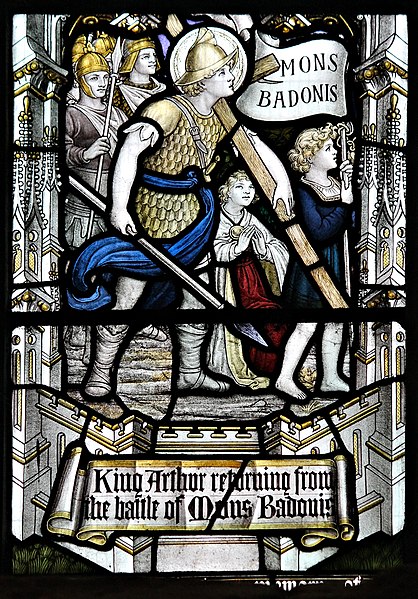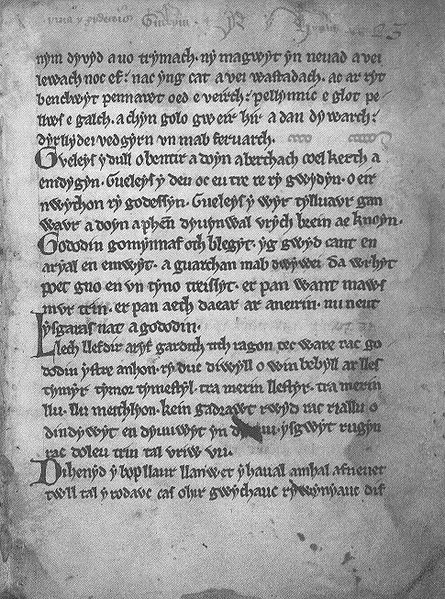Culhwch and Olwen is a Welsh tale that survives in only two manuscripts about a hero connected with Arthur and his warriors: a complete version in the Red Book of Hergest, c. 1400, and a fragmented version in the White Book of Rhydderch, c. 1325. It is the longest of the surviving Welsh prose tales. Lady Charlotte Guest included this tale among those she collected under the title The Mabinogion.
The opening lines of Culhwch and Olwen, from the Red Book of Hergest Kilydd mab Kelydon Wledig a fynnei wraig kyn mwyt ac ef. Sef gwraig a vynna oedd Goleudyd merch Anlawd Wledig.
Culhwch at Ysbaddaden's court. An illustration by E. Wallcousins in Celtic Myth & Legend, Charles Squire, 1920 "Horses shall I have, and chivalry; and my Lord and kinsman Arthur will obtain for me all these things. And I shall gain thy daughter, and thou shalt lose thy life." "Go forward...and when thou hast compassed all these marvels, thou shalt have my daughter for thy wife."
Questioning the Ouzel of Cilgwri in Culhwch and Olwen by Shirley Jones (2016)
King Arthur, according to legends, was a king of Britain. He is a folk hero and a central figure in the medieval literary tradition known as the Matter of Britain.
Tapestry showing Arthur as one of the Nine Worthies, wearing a coat of arms often attributed to him, c. 1385
King Arthur returning from the Battle of Mons Badonis (or Mount Badon). First reference to Arthur, found in early Welsh literature. Stained glass in Llandaf Cathedral, Cardiff.
Supposed former gravesite of Arthur at Glastonbury Abbey in Somerset
A page of Y Gododdin, one of the most famous early Welsh texts featuring Arthur (c. 1275)







